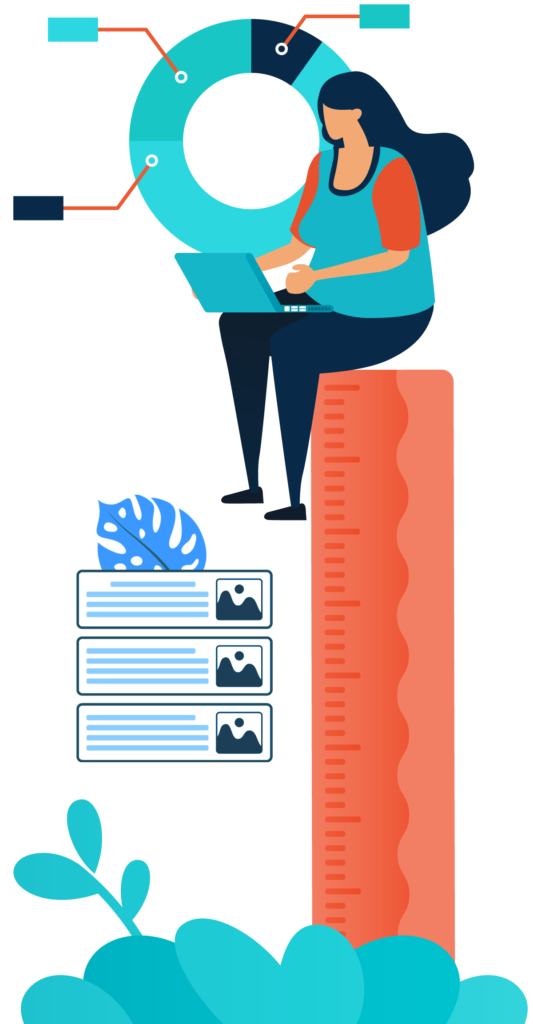On-Page Optimization
On-Page Optimization or On-page SEO is the part of Search Engine Optimization that is done on the webpage. This is important to make the page Google-friendly so that the Google bot can easily understand the content and purpose of the page and accordingly it will display it in the search results.
5 Golden Rules of On-Page SEO
URL
URL is the most important On-Page SEO factor. This is because it is unique for every webpage on the Internet and search engines show specific URLs when you search for any term. If you change the URL, the webpage gets changed and it loses its ranking. So, setting up the right URL when you create a new page is extremely important.
The best way to create an SEO-friendly URL slug is to use your main targeted keywords in that. If you have not done the keyword research yet, you can use your main page title as the URL. For example, one of our pages is about SEO Packages and Pricing in Dubai. So, the page URL is https://dubaiseostars.com/seo-packages-dubai/
Try to keep the URL short, don’t include any special characters, try not to use any numbers and anything else that is not related to your main topic of discussion. In our example URL, you can notice that it is short, precise, and to the point.
Title
After URL, Title is the second most important factor for On-Page SEO. It informs search engines and visitors about the main topic of the page. It is prominently visible on search results and when the webpage is shared on social media.
As the Title tag tells search engines about the web page’s topic of discussion, changing it can impact ranking position. The Title should include your targeted keywords and the main topic of discussion. At the same time, it should be easy to understand and user-friendly as it also controls your Click Through Rate (CTR). After performing a search, the first thing a user reads about your site is the Title. If he finds it suitable, then only he clicks on that and goes to the site. So, you need to consider both, search engines and users while writing the Title tag.
To get all your words clearly visible on SERPs, your title tag should be 60 characters or less. Google sometimes rewrites the Title tag whenever it thinks rewriting can give more clear information to the user.


Meta Description
The Meta Description is the line that appears as a snippet on search results just below the Title and URL. The maximum visible length of Meta Description is 920px (~160 characters) on laptop or desktop computers and 680px (~120 characters) on mobile devices. So, it can be a short 160-character summary of your page that describes your main topic of discussion. It can also be an extended description of your title tag. The Title tag and Meta Description should always complement each other, they should never contradict.
It’s a good idea to include your keywords in Meta Description, but it should be in a way that sounds logical and grammatically correct. Almost 63% of the time, Google rewrites Meta Description. So, you need to be as natural, precise, and relevant as possible. Although it’s required for every page, you should give more focus to the pages that drive more traffic.
H-Tags
The H-tags are HTML headings that are mainly used for page Titles and Subtitles. H-tags are categorized into 6 levels, from H1 to H6. They help search engines understand the page better by providing a structure to the site. The H1 tag is the most prominent one and is often used within the webpage as the main page title.
A good practice is to use one of your targeted keywords as an H1 tag. The LSI version of keywords can be used as H2 and H3 tags. Your H1 tag should be compelling and match the SEO title tag or should be another version of the Title tag. If both of them talk about different things, you need to change any of them to bring them back into alignment.
You need to use H-tags on all your important pages for better visibility on SERPs. The H1 tag should be used only once on any particular webpage whereas other tags can be used multiple times.
Content
Content Optimization is the process of adjusting your website content to get maximum value out of it. The optimization process can vary depending on the goal you want to achieve. For example, the content optimization for a page that you want to rank higher organically will be different than a conversion page that you intend to use as a landing page for PPC.
The right Content Optimization can boost performance and bring you visible results in terms of higher organic traffic, higher CTR, and more leads. While the proper optimization can bring you more sales, over-optimization can hamper your site and suppress it from achieving top positions on SERPs. So, the content should neither be under-optimized nor over-optimized. For this, you need to have a clear understanding of placing the keywords in the right way and keyword density. So, the right content covers everything that your potential views look for, it is properly structured, and easy to read.

Our On-Page SEO Service
The above-mentioned On-Page SEO factors are only a few selected ones that carry maximum weightage. Apart from these, there are thousands of other factors like internal linking, external linking, image optimization, and a lot more that affect the ranking of your site on search engines. It is such a vast process that you need an On-Page SEO Expert to complete the task in the right way.
We have a team of SEO Experts in Dubai. We have done On-Page SEO Optimization for several businesses and brought visible changes in ranking and traffic. We can do the same for your business website. Click on the below button and fill out our SEO Consultation form and one of our consultants will get in touch with you.
